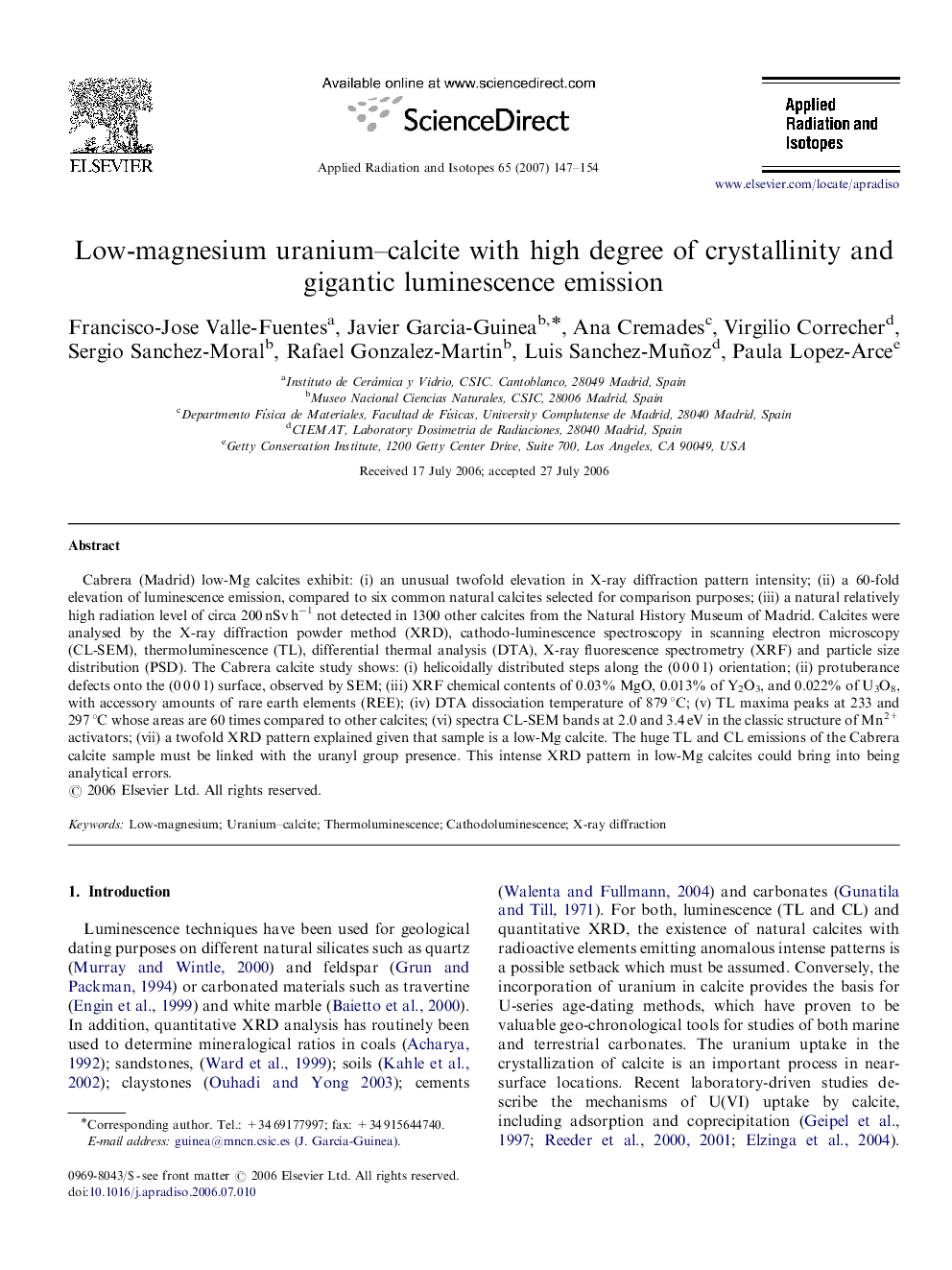| Article ID | Journal | Published Year | Pages | File Type |
|---|---|---|---|---|
| 1877401 | Applied Radiation and Isotopes | 2007 | 8 Pages |
Cabrera (Madrid) low-Mg calcites exhibit: (i) an unusual twofold elevation in X-ray diffraction pattern intensity; (ii) a 60-fold elevation of luminescence emission, compared to six common natural calcites selected for comparison purposes; (iii) a natural relatively high radiation level of circa 200 nSv h−1 not detected in 1300 other calcites from the Natural History Museum of Madrid. Calcites were analysed by the X-ray diffraction powder method (XRD), cathodo-luminescence spectroscopy in scanning electron microscopy (CL-SEM), thermoluminescence (TL), differential thermal analysis (DTA), X-ray fluorescence spectrometry (XRF) and particle size distribution (PSD). The Cabrera calcite study shows: (i) helicoidally distributed steps along the (0 0 0 1) orientation; (ii) protuberance defects onto the (0 0 0 1) surface, observed by SEM; (iii) XRF chemical contents of 0.03% MgO, 0.013% of Y2O3, and 0.022% of U3O8, with accessory amounts of rare earth elements (REE); (iv) DTA dissociation temperature of 879 °C; (v) TL maxima peaks at 233 and 297 °C whose areas are 60 times compared to other calcites; (vi) spectra CL-SEM bands at 2.0 and 3.4 eV in the classic structure of Mn2+ activators; (vii) a twofold XRD pattern explained given that sample is a low-Mg calcite. The huge TL and CL emissions of the Cabrera calcite sample must be linked with the uranyl group presence. This intense XRD pattern in low-Mg calcites could bring into being analytical errors.
